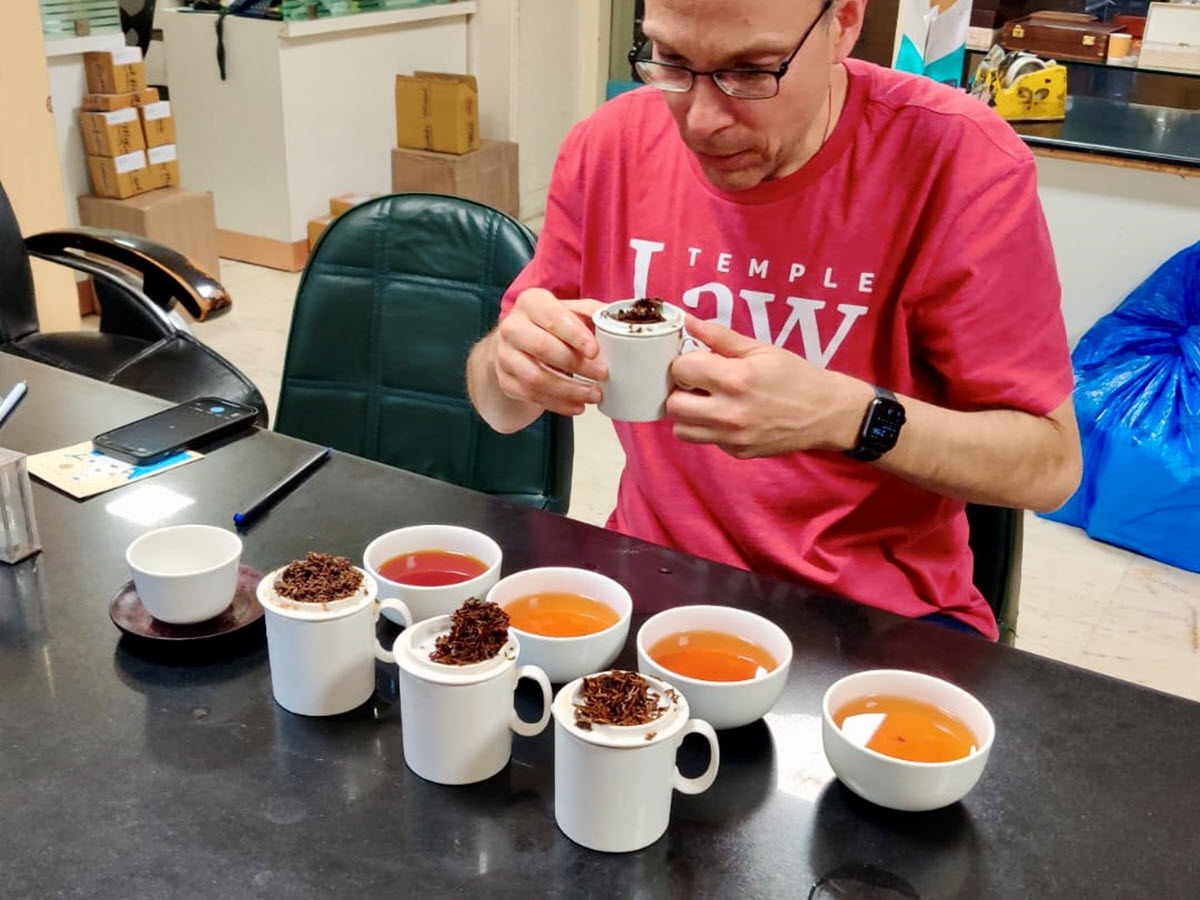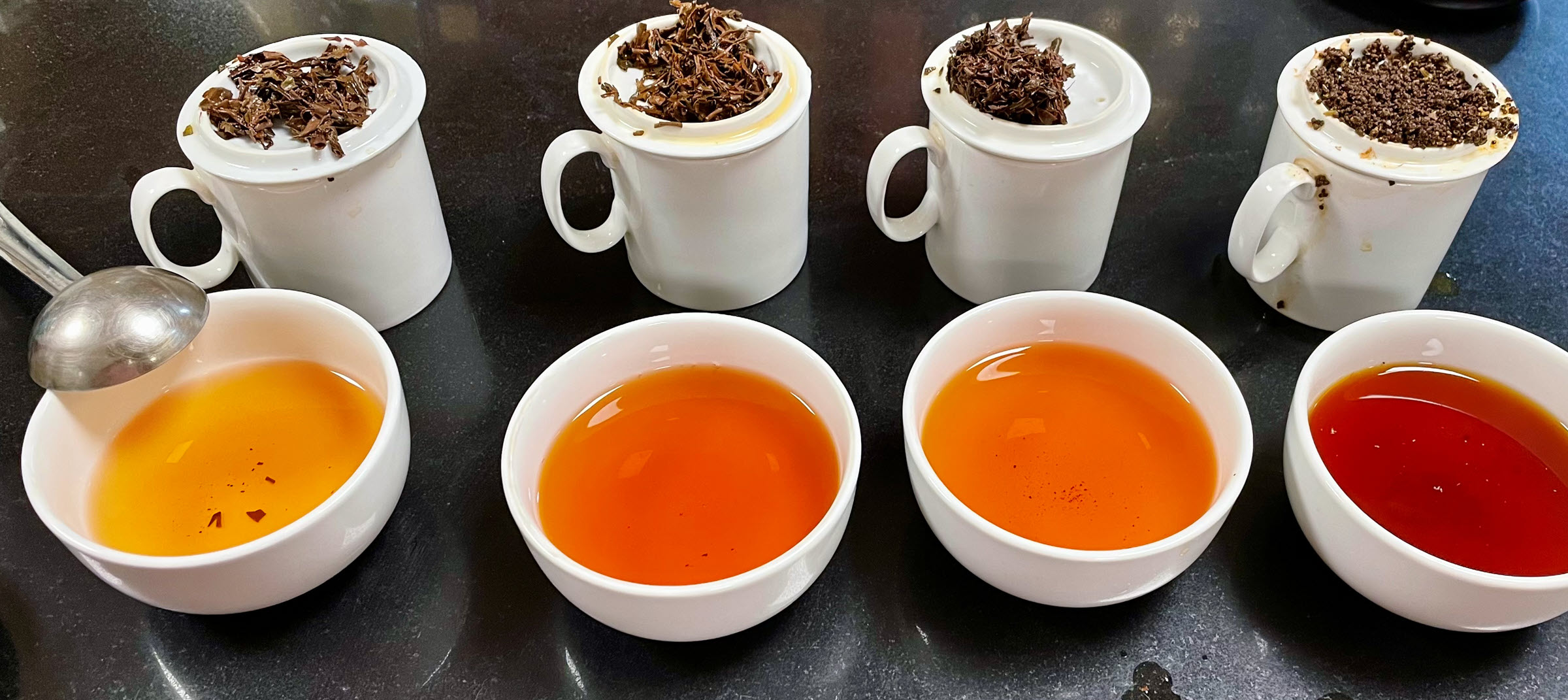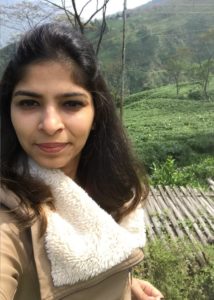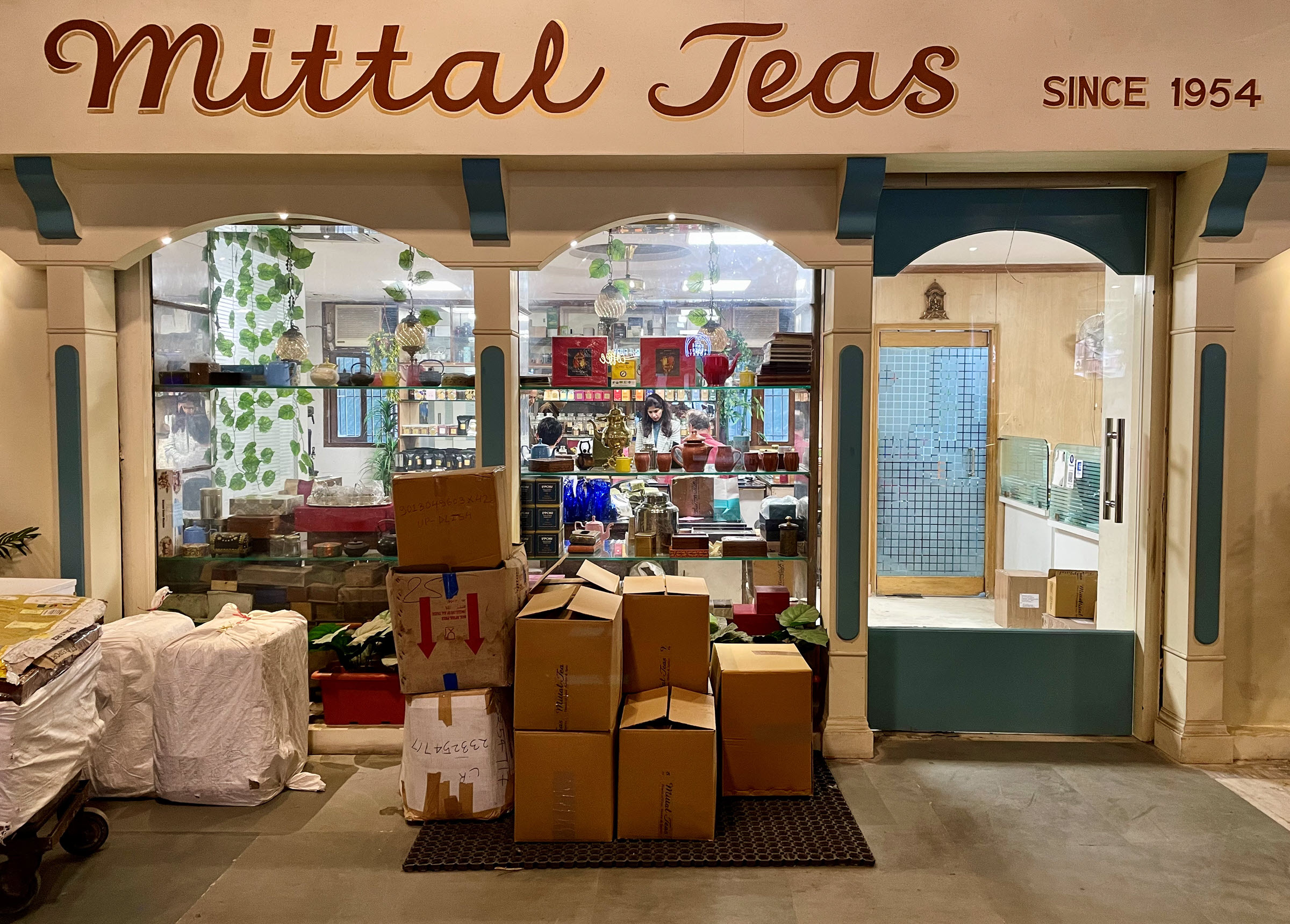
Good Health for Body and Mind
We often see chai where tea is sold. Starbucks sells chai tea lattes, Twinings sells boxed “chai tea” bags, and Indian restaurants serve masala chai. I recently visited India and plunged into the culture to better understand chai. In learning about chai, I also discovered how it is an important part of a personal wellness plan.
What chai is… and is not
“Chai” literally means tea, and it is redundant to say chai tea. In everyday Indian life, though, chai is considered sweetened milk tea. “Masala” means spiced, so masala chai is spiced milk tea. Any plain tea without milk or sugar is called “green tea,” unless described for what it is, such as black tea, herbal tea, or ayurvedic tea.
Nikita Mittal, the third-generation operator of Mittal Teas in Delhi, says that almost all Indians drink chai daily. “There is no fixed way to make chai,” she says, “but there are certain things in common: tea, milk, and sugar.” Black tea leaves, water, milk, and sugar will be boiled in a pot and then strained through a cloth.
As for spices, there is a large variation of combinations, with unpeeled ginger mashed with a mortar and pestle and cardamom being the most common. Sugar will be added unless requested otherwise. “There are other options for sweeteners for those who wish to avoid sugar,” Mittal adds, “such as honey, licorice, stevia, and vetiver.”
Chai is almost always made with whole milk, although some may prefer skim milk or plant-based milk. “There is usually an equal ratio of tea to milk,” Mittal says, “but many prefer more tea and less milk.”
As tea does not infuse as well in milk as water, about twice as many tea leaves are needed for the infusion. “I prefer long-leaf Assam,” Mittal says, referring to a tea from one of India’s six primary tea-growing regions. However, chai can be made with loose-leaf or crushed (CTC) tea leaves.
Although we generally drink tea in the West in a 10-oz (300 ml) teacup or mug, chai in India is typically consumed in smaller 3-oz (100 ml) cups. Whether the weather is hot or cold, chai is always consumed hot. Often, chai is made in the morning for the entire family or placed in a thermos to drink in small amounts throughout the day.
Chai sellers, or chai wallahs, are ubiquitous in India. Yet, for those who have neither a local chai wallah nor the time to boil up chai at home, Mittal suggests a simplified version. “Fill a mug about half with milk and half with water, heat in the microwave until boiling, steep with two spiced teabags for 3-4 minutes, and add sweetener.” Not ideal, she says, but it will work in a pinch.
Masala chai is like a mini meal, as it not only includes the well-documented health benefits of tea but also has protein and calcium from milk, anti-inflammatory properties from ginger, and superfood benefits from spices. “I add Tulsi, or holy basil, to my chai blend,” says Mittal, “because of its detox properties.” A good cup of chai is a microcosm of good health.
 Chai and mental health
Chai and mental health
“Like most Indians,” Mittal says, “I always start my day with a cup of chai.” As the first taste of the day, chai provides health benefits and a mental boost by knowing that you treat your body well. Then, throughout the day, consuming a cup of chai offers something positive rather than reaching for junk food when feeling down or anxious.
It is common in India to take chai breaks. The cups are small, and the breaks are short, but they serve an important purpose. “Each afternoon,” Mittal says, “no matter what I am doing, I will stop for a cup of chai. It is just a moment, a hiding place, and a break from my thoughts. But this moment is a reset that always rejuvenates me.”
Moreover, with loneliness at epidemic levels, chai can provide a vehicle for connection. Mittal says, “In India when a guest visits your home, it is rude not to offer chai and rude to refuse a cup of chai.” Thus, chai is at the pinnacle of India’s legendary hospitality, exemplified by the national tourist campaign Atithi Devo Bhava, or the Guest is God.
For example, on my trip to India, I visited 10 law schools across three cities to explore academic partnerships. At each school, without exception, chai was served at the beginning of the meeting. This gesture reduced distance, created a cordial environment, and set the scene for a pleasant conversation. I think everyone felt instantly disarmed as soon as the chai was served.

Mittal explained a popular Hindi expression, “There is always room for chai.” Although a host will use this phrase to persuade guests to stay longer, we can also be friendly to ourselves. Wellness experts advise us to pause and breathe deeply or practice mindfulness at regular intervals, even if only for a minute each time. A chai break fits perfectly in that mindset.
Chai in India generally refers to a small cup of milk tea, but this understanding can vary from household to household, depending on family tradition or personal preference. As part of the larger culture, chai supports mental wellness and hospitality. Indeed, there is always time for chai, and may you treat yourself and others divinely with each cup.
 Mittal Teas
Mittal TeasTo learn more visit Mittal Teas
I tried a variety of ways to access this article, but none worked. Could the issue be fixed?
Hi Paula, visit https://teajourney.pub/tea-discovery-indian-chai/
Being an Indian, I did not know so much about Chai as I never thought in those directions. Author, seems has more interest in Comparative cultural studies and that is why he could go so much into chai culture and its adventages.
A great analysis indeed.
Many thanks, Dr. D K, for these thoughts! Namaste 🙏
Such an interesting read. I specially loved the connection between tea and mental health. Congratulations.
Thanks for the comments, Shraddha! As I prepared this article, I really enjoyed learning about the various aspects of chai culture.
I have a much more thorough understanding of chai now. Thank you!
Thank you, Allyson, and I’m so glad you found the article helpful! I look forward to learning more about chai and chai culture as the tea journey continues.
Great explanation
Many thanks, Pushpendra! And thanks again for the wonderful tour of Jaipur. Highly recommended.